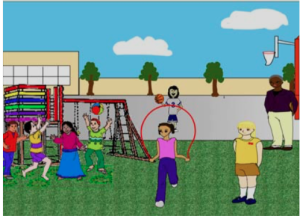R3 – Empathy in VR
|
Empathy and VR
In “Conceptualising and Measuring Empathy,” Gerdes describes the disparate research methods and results of empathy. There are empirical methods and “social cognitive neuroscience” methods, ie observing the way people act and measuring ‘mirror neurons’ amongst other brain scans. He calls for a concrete definition of empathy, for the sake of “social work practitioners [who] are to cultivate empathy in ourselves and others.” In “Measuring Empathy: Reliability and validity of the Empathy Quotient”, Lawrence defines two aspects of empathy: “cognitive empathy” and “ emotional empathy”. He then proves the validity of his empirical research method of using an ‘Empathy Quotient” test, in which participants self-report their empathetic state. In “The neural bases of empathic accuracy”, Zaki combines social science techniques with social cognitive neuroscience, which he claimed had “… left unclear whether and how these systems contribute to accurate inferences about social targets.” Finally, in the research article “Can Virtual Reality Simulations be used as a Research Tool to Study Empathy, Problems Solving and Perspective Taking of Educators?”, the answer is yes, they can. This paper claims that VR can stimulate the areas of the brain associated with empathy. Also it points out how VR can be a more accurate utility in sharing perspectives of those who previously couldn’t be as understood, such as people with brain disorders(eg schizophrenia). The paper ends with an example of an empirical experiment performed with VR to measure how empathetic teachers were in a simulated situation on a cartoon playground, an example of how VR can be used to “cultivate empathy” in social work, as Gerdes said.
Response: Empathy is an important human-to-human interaction. But what is empathy? I understand the need to define it in the context of social work, but outside of that realm, is empathy an always-changing abstract idea, or is it a tangible feeling/behavior caused by these mirror neurons in my brain? After reading these articles, it appears that empathy serves whatever purpose is convenient in context. So all that we need to know is that empathy exists. It connects people and facilitates understanding, whether emotionally or otherwise. Whatever it is, there are still too many uncorrelated ways to measure empathy. Based on discussion and the subjects’ responsibility to be truthful, empirical data can only be used in reference to itself. Discovered by accident in a monkey lab and whole-heartedly quantitative, social cognitive neuroscience data is difficult to apply to people’s lives. Together in moderation, it seems that a combination of these two methods can more accurately and more relevantly measure empathy. In theory, VR has the potential to measure empathy more accurately than before, because more of the environment of a subject can be standardized and controlled, while people can more confidently give feedback on an immersive, more real experience. But how can the unreal characteristics (such as its solidarity and separation from the video itself) of VR negatively affect measurements of empathy? What advances in the technology are required to create an appropriate VR environment for these types of research?
|



